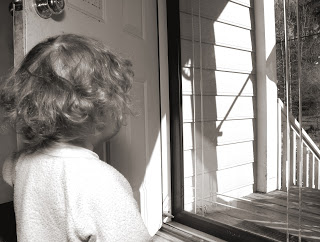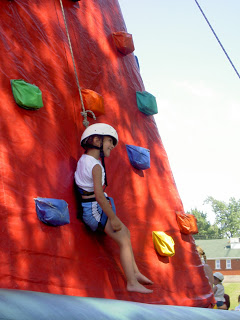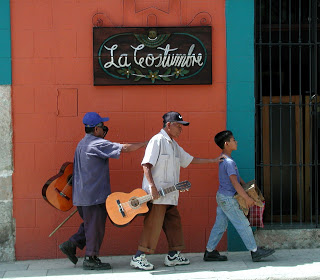“Worrying is like a rocking chair, it gives you something to do, but it gets you nowhere.”
~ Glenn Turner
Monthly Archives: April 2011
Fenrir: Big, Bad Wolf
A few weeks ago I wrote about trickster tales, and the importance of reclaiming intellectual courage from the stigma of trickery. The tradition of the trickster is world wide, and many of the stories are very fun.
Some of them, not so much. Fenrir the Wolf is like that.
The trickster figure may have been a way of explaining why a beautiful and bountiful world contains so many dangers and sorrows. Among the Norse people of Scandinavia, Loki was blamed for some very grim events, including the Death of Baldur (which I will retell in an upcoming post). On top of that, Loki also fathered three monstrous children with the giantess, Angrboda: a horrible serpent, the grim daughter Hel (consigned to underworld, and giving us the word Hell), and the dread wolf, Fenrir. Prophecy told the gods that Fenrir would swallow the sun at world’s end, destroy all creation and kill Odin. Bad wolf. Very bad wolf.
Because of this prophecy, the gods decided they would have to restrain Fenrir, but it was no easy task. He had the cunning of his father, and the strength and size of his mother. The gods played to his vanity, daring him to break an iron chain. He did it. Increasingly nervous, the gods tried a stronger chain, which Fenrir also broke. At last, they resorted to asking for help from the magical people underground, the dwarves, who fashioned a silken ribbon with enchantments to keep it from snapping. The gods offered Fenrir the chance to prove his strength once again by allowing them to tie him in this ribbon. Sensing a trick, Fenrir said he would allow himself to be tied, on the condition that one of them put his hand into his mouth.
Only Tyr, god of justice and right action, stepped forward to offer his arm as hostage. The wolf was tied with the spellbound rope, which tightened more each time he struggled. And each time he struggled, he bit down harder on Tyr’s hand, until at least he bit it off. The wolf was securely bound and imprisoned for all time.
My daughter and her classmates heard this story last year in school, and I told it to K. and two of her friends again a few days ago. “Was Tyr brave?” I asked. One of the girls said, “But he had to do it, it was his turn to do something difficult, so he had no choice.”
“Does that mean a soldier who is ordered to do something dangerous is not brave?” I asked.
“He could have said no,” K. said. “He did have a choice. Tyr was brave.”
Tyr was brave because he did the right thing, the girls concluded. He volunteered for something that had to be done for the safety of the whole world, even though it was really dangerous for himself. Moral action often comes at the expense of physical safety, or even life. It seems that the kind of moral courage we have seen in civil rights and justice struggles around the world frequently requires physical courage as a partner. To do the right thing, the moral thing, even if it puts us in physical danger, inspires awe and admiration. We always have a choice, even if all our options are against our nature or if the choice is made with little conscious deliberation. This is why acts of moral courage or right action inspire us, because we are seeing people choose a righteous path in spite of the danger. When we witness peaceful protesters being beaten or attacked but not fighting back, we see the courage of a god. This is why we also share true stories from history with children – so they can see that the six types of courage also dwell in the real world, and are not only the stuff of legend.
Courage Book Review – Speaking of Courage
Today we offer some books you might share with your kids.


, by Betsy Hearne, illustrated by
Bethanne Andersen. Why is history so often taught using wars as markers? Here, Hearne offers seven women who lived at the time of one war or another, “but she did not fight in it.” Instead, these women demonstrate the courage to immigrate, to raise a family on a lonely farm, to enter a male-dominated career, to pursue dreams, to practice compassion; the generations of the narrator’s family and the artifacts each woman left as a talisman of courage are sure to spark conversation. For early primary grades.

, a
story in poems and pictures by Vera Williams. Through poems, we learn that sisters Amber and Essie are on their own a bit too much, and have a bit too little to eat. Mother is working; Father is in prison. The emotional courage each inspires in the other is what helps them carry on, in spite of uncertainty. For readers up to 10 or 11.
WHAT Did Your Kid Just Say?
During my addiction studies in graduate school, I learned the Twelve Step acronym H.A.L.T. for Hungry, Angry, Lonely, Tired—an acronym to remind someone dealing with addiction to tune into their feelings instead of numbing them through destructive habits. I later adapted this acronym for my parenting education workshops as a helpful and useful checklist for decoding common cries, cranky or fussy behavior. It is a vital tool of courage, and essential for our survival, to be able to decode our own and others cries for help!
As an aside, this checklist will be helpful the next time someone snarky stares at you in the supermarket when your child is pitching a fit on the cereal aisle floor and asks: “You let your kid talk to you like that?” Your confident reply can now be: “Well, it might not sound like it to you, but I am actually just decoding his cry for help!”
Dr. Lisa’s Parenting Tip:
 How is your child’s sleep? Is it time for a nap? Is it possible he/she is preparing to fight a cold/flu bug that might be going around? Sleep being the necessary restorative process for human survival—particularly during times of illness. Or is he/she about to achieve a new developmental milestone, like learning to walk or dealing with his/her first break-up? All the tasks associated with physical and emotional courage take lots of energy!
How is your child’s sleep? Is it time for a nap? Is it possible he/she is preparing to fight a cold/flu bug that might be going around? Sleep being the necessary restorative process for human survival—particularly during times of illness. Or is he/she about to achieve a new developmental milestone, like learning to walk or dealing with his/her first break-up? All the tasks associated with physical and emotional courage take lots of energy! 3 months to 1 year : 13 to 15 hours
1 year to 2 years : 13 hours
2 years to 5 years : 11 to 13 hours
5 years to 12 years : 9 to 10 hours
Adolescents : 8 to 9 hours
(Source: http://www.livestrong.com/article/9356-healthy-sleeping-children/)
Courage Tip of the Day
Find or print out a favorite photo of a relative who doesn’t live nearby or who has died. Give the photo a seat at the dinner table tonight and include that person in the conversation! Say a few words about what you appreciate/appreciated about this relative. Practice an attitude of gratitude!
(Living in Japan and other parts of Asia for many years, Lisa had the honor of visiting many homes with small shrines in family living rooms where each family member practiced daily devotional meditation or sent prayers of thanks to their ancestors. Complete with food, drink, candles, and/or incense offerings.)
Into the Enchanted Woods!
“This is exactly the message that fairy tales get across to the child in manifold form: that a struggle against severe difficulties in life is unavoidable, is an intrinsic part of human existence – but if one does not shy away, but steadfastly meets unexpected and often unjust hardships, one masters all obstacles and at the end emerges victorious.”
“The more I tried to understand why these stories are so successful at enriching the inner life of the child, the more I realized that these tales in a much deeper sense than any other reading material, start where the child really is in his psychological and emotional being. They speak about his severe inner pressures in a way that the child unconsciously understands, and – without belittling the most serious inner struggles which growing up entails – offer examples of both temporary and permanent solutions to pressing difficulties.”
Never can say “Good-Bye”?
I remember feeling instantly protective of my son E. when he was born. We were a symbiotic unit during those early days. I was reticent to hand him over and he was reticent to be put down. I will, however, be forever grateful for every time his father offered me a much-needed reprieve and walked those endless blocks in the middle of the night to help E. fall asleep.
During the first three months of his life, like most other mother-infant (or primary caregiver-infant) pairs, we were tuning ourselves into each other’s verbal and non-verbal cues and especially our feelings. Best known in attachment theory literature as attunement. E.’s signals of distress, crying, grimacing, stiffening of his muscles, clenching his fists, or arching of his back, were often associated with tiredness, hunger, and especially with E., proximity-seeking. By six or nine months an infant’s primary attachment(s) are well-established and secure—as was ours.
During the course of our first three years together, we began the first of our most important courage challenges: to learn how to say goodbye whilst ensuring psychoneurobiological homeostasis (which is fancy talk for “not melting down during every little separation!”)
As a new mom and trained child/family therapist, I was aware how adaptive E.’s startle response and protests against separation were for his survival. As a student of psychology, I remembered that most child development research shows that it isn’t until seven to ten months that infants begin to show fear and stranger anxiety. It takes that many months for this more complex defensive or inhibitive behavior to develop in the autonomic nervous system due to the maturational time-line of the brain’s cingulate cortex (the area of the brain which is primarily involved via the limbic system with emotion formation and processing, learning and memory).
I was careful to listen to E.’s need for mama-time. I also continually, gently, encouraged his time to bond, during those first seven months, in the arms of other loved ones—those aunties, uncles, siblings, grandparents, close friends, and eventual babysitters who would become the important secondary attachments in his life. In those instances, I handed over E. with confidence and trust in his other caregivers whilst also paying close attention to his reactions. We taught each other a great deal about interpersonal trust and emotional and social courage during those early days of building family connections.
Though exhausted new parents, we continually held E., and walked, sang to, read to, fed on demand not always on schedule, and didn’t let him cry himself to sleep (though we tried a few times with heart-breaking results instead of the success and sleep other friends enjoyed). We practiced the 7 Baby B’s of Bonding. We weren’t coddling or spoiling him, we were teaching him to feel safe in the world. We were calming his nervous system so his neurons could wire and fire in the direction of survival and maintain or restore homeostatic and emotional balance—whatever the case may be.
Despite what some of the baby books said about letting him ‘cry it out’, I paid close attention to what his cries conveyed to me and made sure he knew I was both sensitive and responsive to those specific cries. In that sense, I was teaching him that his voice mattered, that he was safe, that I was his secure base, and with those assurances he could learn to separate and be well in another’s arms.
We were privileged to be able to have this time with our infant son, and careful to live simply so that we could afford to support this critical period of his development. We also got some good advice early: it’s not stuff that your child needs, it’s YOU!
We often said to one another, my husband and I, “These early years with our kids are not our money-saving years.” We didn’t have fancy new strollers or cars, we sacrificed some career-advancing opportunities in favor of time at home with our kids, and our savings account dwindled. But, it turns out we were wrong: they were our money-saving years! The investment of time, patience, love, and attuned attention for our children turns out to be priceless in terms of ensuring their physical, cognitive, social, and emotional well-being. The costs are astronomical when we don’t ensure our children’s well-being and thus their capacity for courage.
These days when economics require that most of us are dual-income families (my family included), taking the time to support a new caregiver’s relationship with your young child, pacing their introduction, tag-teaming with trust, is vital to the attachment process a child needs to transfer attention and then affection from parent to a new caregiver. Here’s some helpful advice about introducing a new caregiver.
Little did I know then, that those first three years together lay the foundation for how my son and I now adapt and listen to one another, let go of one another, and relax trusting in our return to the safety and security available in our relationship. Bigger separations were to come: my return to work, starting preschool and then kindergarten.
E’s separation protests were strong at times. The first day of preschool, he screamed at the top of his lungs to make sure that his new teacher, all the other new parents and myself knew all about his separation anxiety, “If you leave me here, I’m going to be not okay and someone is going to have to call Dr. X (our family doctor)!” It took everything I had to leave him. Before I did, I leaned down to meet his eyes and hold his precious little hands in mine (removing them from around my neck), and said reassuringly “I know it is a big change to come here. That’s why we’ve practiced a few times and now I know you are ready. You need to know I would never leave you with anyone or in any place that I didn’t think was safe and good for you.” Then, I walked away with tears in my eyes remembering how much courage it took me to leave my own mom on my first day of school. I was filled with compassion for my son. Somehow I knew, though, that I had to be the strong one in that moment and bid my good-bye. I had to believe in him first, before he experienced the confidence boost that is associated with being brave enough to try something new, something scary, something that you have to do all on your own!
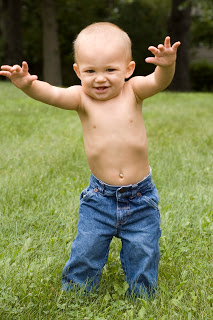
I now live with a confident, funny, loving thirteen year-old who has no trouble forming friendships, reaching out to his relatives, trying new things which require getting outside his comfort zone, completing his homework and guitar practice without being reminded, letting me know when he’s not feeling well or just needs some space, even changing schools and countries. E. is not prone to fear or anxiety—instead he is the prototypical surfer dude who rides life’s waves with joy and ease. This adolescent is the same infant who hardly ever wanted to be put down during the first nine months of his life, until he stood up one day in his ninth month and walked, then ran, across the living room collapsing into our laps. And these days, without fail, every morning he leaves the house to catch the school bus, the last words I hear him confidently call out are “Bye, Mom!” He waits for my response, “Bye, Love!” Then, he closes the front door and he’s off on his own journey. In that moment, I sigh with the subtle heart pangs of another good-bye, trusting in his strength and mustering the courage to love and let go.
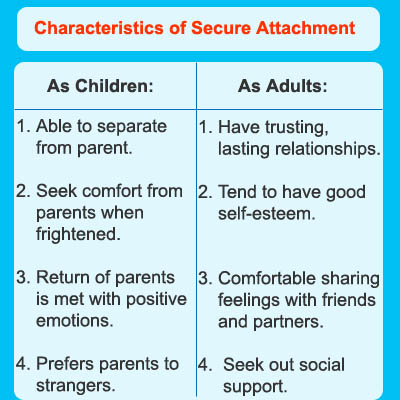
Sources:
Warren, S., Huston, L., Egeland, B., & Sroufe, A. (1997). Child and adolescent anxiety
Courage Quote of the Day
“Sometimes the biggest act of courage is a small one. ”
~ Lauren Raffo
Courage Question of the Day
Lion’s Whiskers asks: What new learning will you push your child to try? What particular courage challenge for your child, will you pull back from in order to allow them smaller baby steps forward?
To read more about what we mean by “Discourage/Encourage: What’s a Parent to Do?” of coaching courage, click here.
Blindfold
The best and most beautiful things in the world cannot be seen or even touched – they must be felt with the heart. ~ Helen Keller
 both sides. I had proposed on a day in February to K. that she lead me blind-folded around the neighborhood some time as a courage challenge, showing her that I was willing to put my safety in her hands. The only problem was that at that time it had become extremely cold, and there was a lot of snow on the ground. So, in a blend of my childhood cleaning technique and blindfold trust walks, K. decided to spend the morning wearing a blindfold in the house – sometimes she needed me to lead her; other times she managed on her own. She was even able to start a load of laundry, since she had long since noticed that the “start” button on our washer has a different shape from all the others.
both sides. I had proposed on a day in February to K. that she lead me blind-folded around the neighborhood some time as a courage challenge, showing her that I was willing to put my safety in her hands. The only problem was that at that time it had become extremely cold, and there was a lot of snow on the ground. So, in a blend of my childhood cleaning technique and blindfold trust walks, K. decided to spend the morning wearing a blindfold in the house – sometimes she needed me to lead her; other times she managed on her own. She was even able to start a load of laundry, since she had long since noticed that the “start” button on our washer has a different shape from all the others.“Okay.”





